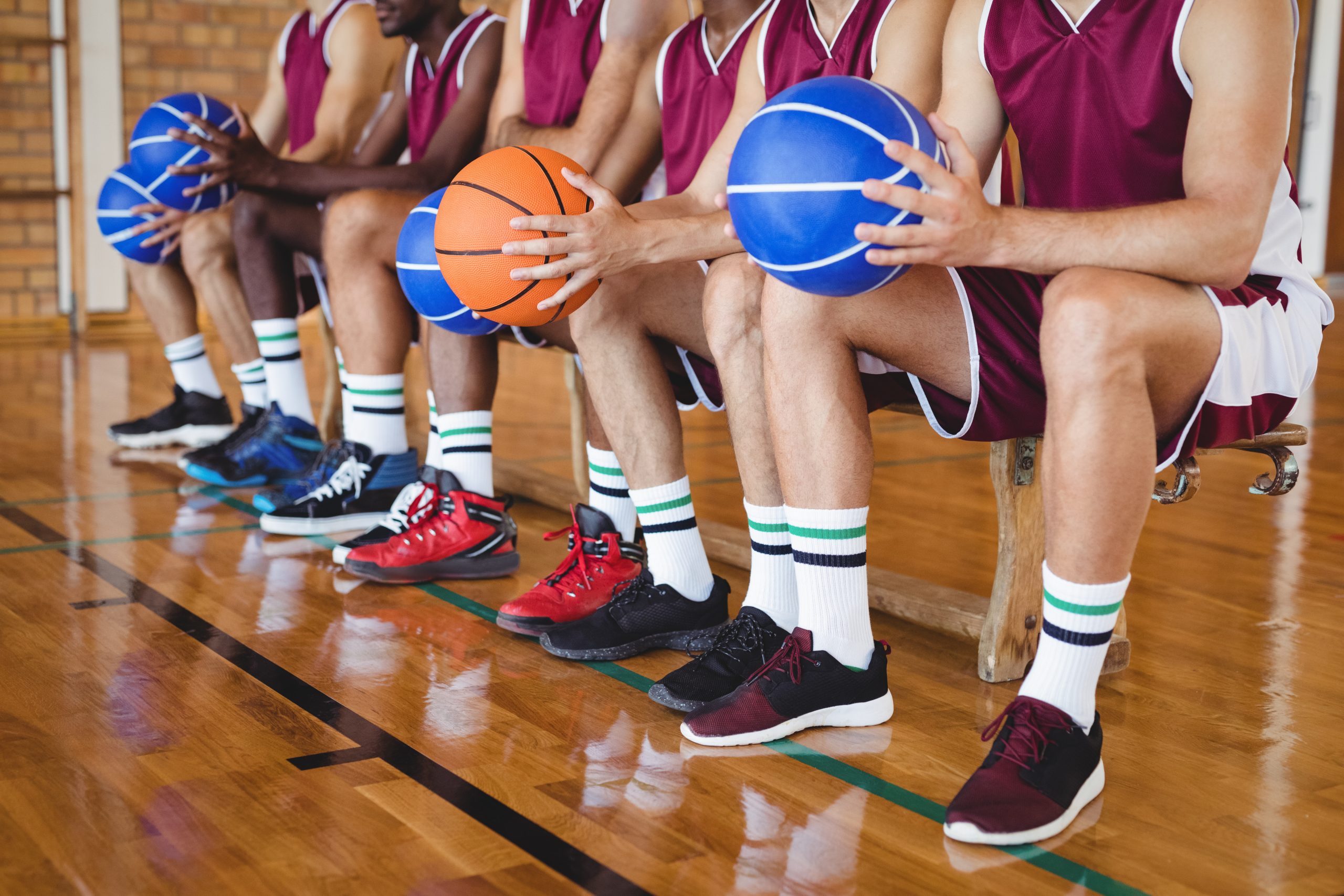
Caption: Basketball players sitting on a bench, wearing both high-top and low-cut basketball shoes.
As basketball evolves, so does the design of footwear aimed at maximizing performance and safety. This article explores the intricacies of low-top basketball shoes, examining their safety, technological advancements, stylish colorways, and current models. It also considers the social dynamics and personal expression crucial for teenagers when choosing their basketball shoes.
The Shift in Basketball Footwear
Basketball shoes have shifted from traditional high-tops to the increasingly popular low-top designs. Extensive research suggests that with proper design and technology, low-top shoes can offer adequate support and safety, challenging the belief that high-tops are inherently better for ankle protection. Leading brands like Nike, Adidas, and Under Armour are at the forefront, innovating to suit all playing styles and needs.

Low-top shoes appeal not just for their performance capabilities. For teenagers, these shoes also represent a style statement and a connection to their favorite basketball players. This blend of form and function makes low-tops particularly appealing to young people, merging on-court benefits with off-court style.
Are Low-Top Shoes Good for Basketball?

Mobility and Speed: Low-top shoes are typically lighter than high-tops, allowing players to move quickly and freely on the court. This can be particularly advantageous for guards or players whose game depends on speed and agility.
Ankle Flexibility: Low-top shoes do not restrict the ankle, providing a greater range of motion. This benefits players who need to change direction quickly and rely on their ability to maneuver swiftly.

Ankle Support: The primary concern with low-top shoes has been the perceived lack of ankle support, potentially increasing the risk of injuries. However, modern low-top basketball shoes often use advanced technologies to stabilize the foot and provide protection in other ways, including enhanced midsole cushioning, secure lacing systems, and innovative designs that offer stability without the bulkiness of high-tops.

Personal Preference and Comfort: Choosing between low-top and high-top basketball shoes is often a matter of personal preference. Some players find low-top shoes more comfortable and perform better in them due to their lighter weight and greater freedom of movement.

Parents often worry about the safety of low-top basketball shoes, particularly regarding ankle support. However, current research and product testing have shown that these concerns can be mitigated with the right features. Platforms highlight the exceptional stability and traction of these models, crucial for preventing slips and enhancing performance during gameplay. Research indicates there’s no significant difference in the rate of ankle injuries between low-tops and high-tops, suggesting that low-tops can be just as safe for basketball. Consequently, a player’s choice of shoes should be guided by personal comfort, playing style, and advice from coaches or medical professionals.
Technological Innovations Across Brands
For teen athletes, the performance of their basketball shoes is often equated with their on-court confidence. Shoes that are part of the latest trend or endorsed by popular athletes can significantly boost this feeling. Thus, when these shoes are also backed by positive safety reviews, it reassures both parents and young athletes that style does not compromise safety.
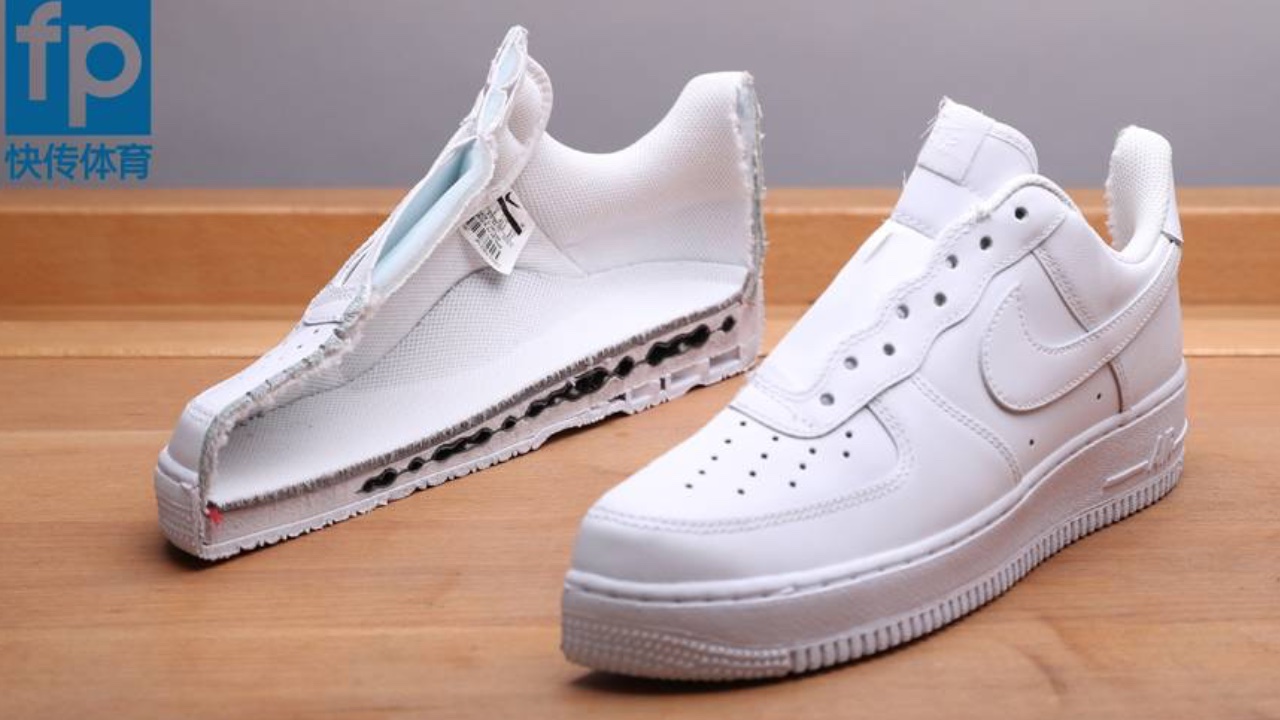
Image: Fastpass.cn – Air Force 1 deconstructed
Best Low-Top Nike Basketball Shoes
Finding the perfect low-top basketball shoe is crucial, whether you’re playing in a local league or the NBA Finals. Low-tops need the right mix of support, comfort, cushioning, and traction to keep up with the dynamic nature of the game.

LeBron XXI Basketball Shoes
Best Low-Top Basketball Shoes by Position
Forwards and Centers: These players need excellent support and stability, even in low-top designs. Nike’s Air Zoom technology provides lasting performance and comfort. The Nike Air Zoom G.T. Run, for instance, stacks a React footbed on top of a React midsole and Zoom Air in the forefoot, offering shock absorption and a responsive feel. The Jordan “Why Not?” line, featuring low-top designs, includes two stacked Zoom Air units in the forefoot for responsive cushioning, enhancing speed and stability.
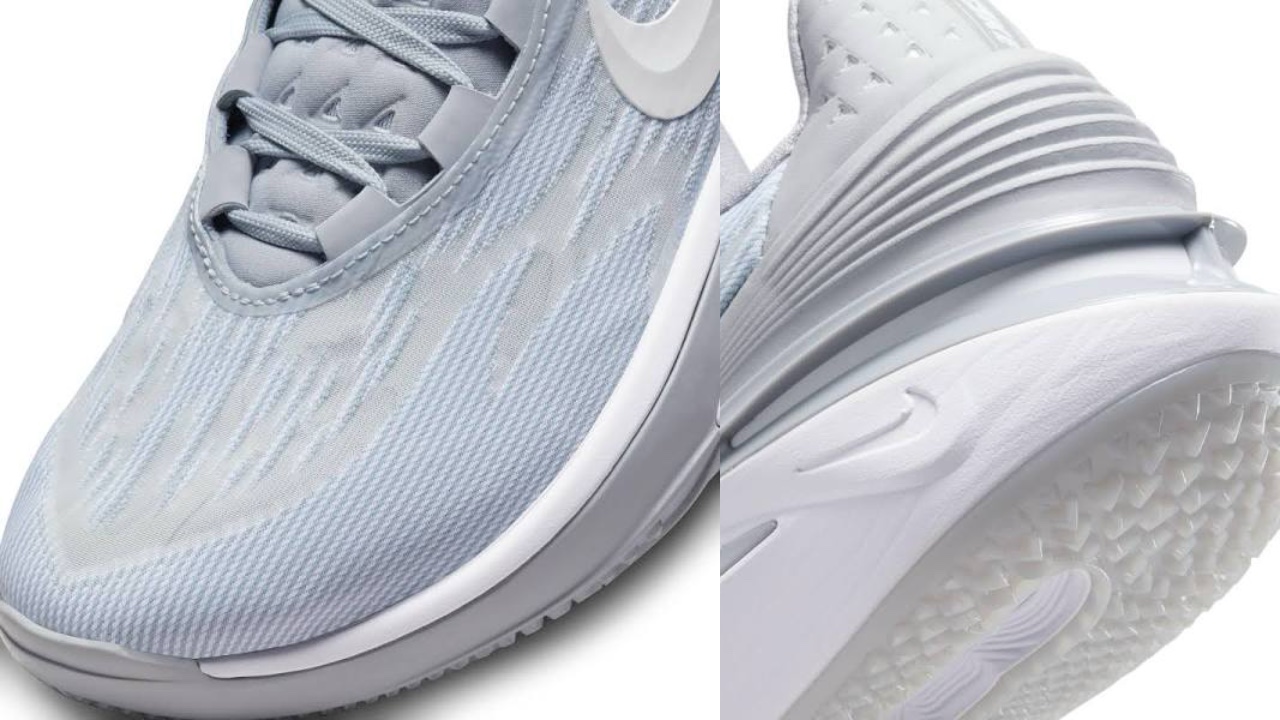
Nike Air Zoom Gt Cut 2 Tb Shoes Men’s
Guards: Guards require shoes with high levels of grip and traction for quick cuts and sudden stops. The Nike Cosmic line, featuring Air Zoom Strobel units partially made from recycled materials, provides efficient acceleration. The Nike Air Zoom low-tops are designed for players who excel at creating and closing space, offering stability and control with minimal ground contact.
All-Around Players: Modern basketball blurs the lines between positions, requiring shoes that offer balanced support, multidirectional traction, and energy return. Nike LeBron low-top shoes combine speed and power with a full-length Zoom Air unit and Max Air in the heel. The Zoom Freak line, designed for versatile play, includes a TPU plate for lateral mobility and Zoom Air units for explosive moves. Nike KD low-top shoes feature durable uppers with minimal material for a broken-in feel and full-length Zoom Air cushioning for dynamic movement. Nike PG low-tops provide agility and support, with a full-length Air Zoom unit connected to the upper for prolonged freshness.
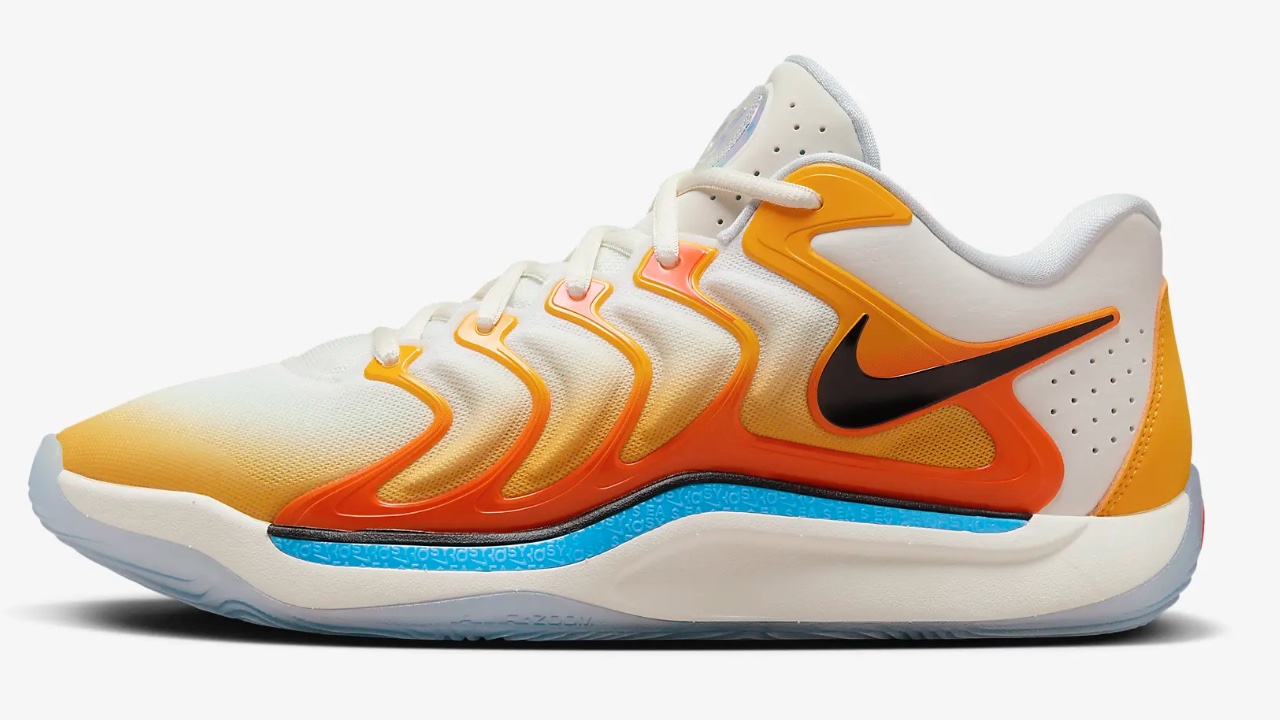
Nike KD17 Basketball Shoes
Basketball Shoe Structure
Understanding the key components of a low-top basketball shoe can help in choosing the right pair. There are three main parts to consider: the upper, midsole, and outsole.
Upper: The upper part of the shoe provides some ankle support, especially during quick cuts and multidirectional moves. Low-tops allow for greater agility and speed, suitable for guards and small forwards. Models like the Nike Cosmic line include additional closure systems for extra security.
Midsole: This part provides cushioning and comfort, reducing fatigue and stress. Look for midsoles with flexible yet sturdy materials that absorb impact effectively. Some low-top models feature external TPU pieces for added stability during lateral moves.
Outsole: The outsole offers traction and grip, crucial for maintaining balance and avoiding slips. Flat, wide outsoles with grooves and ridges provide optimal multidirectional traction.
Best Low-Top Adidas Basketball Shoes for Your Playing Style

Best Low-Top Basketball Shoes by Position
Forwards and Centers: Even in low-top designs, forwards and centers need stability and support. The Dame 8 EXTPLY, for instance, features a dynamic Bounce Pro midsole for elevated stability and lightweight cushioning. Its internal sock construction and TPU propulsion plate ensure that your feet are locked down, providing confidence and agility during practice and games.
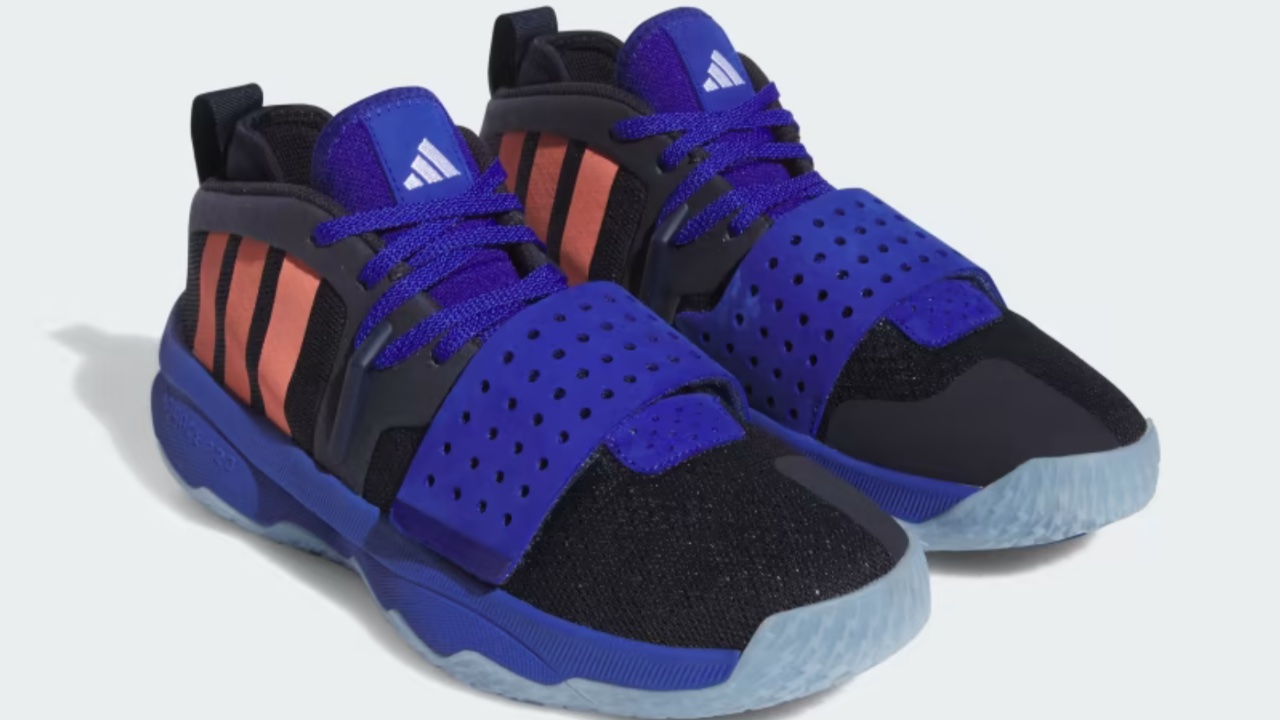
DAME 8 EXTPLY BASKETBALL SHOES
Guards: Guards require shoes with excellent grip and traction for quick cuts and sudden stops. The Trae 3, designed with peak performance in mind, features composite foam in the midsole for explosive power. The asymmetrical Torsion Bar enhances stability, and the high-abrasion outsole, developed using biometric data, ensures excellent grip and support for quick direction changes.
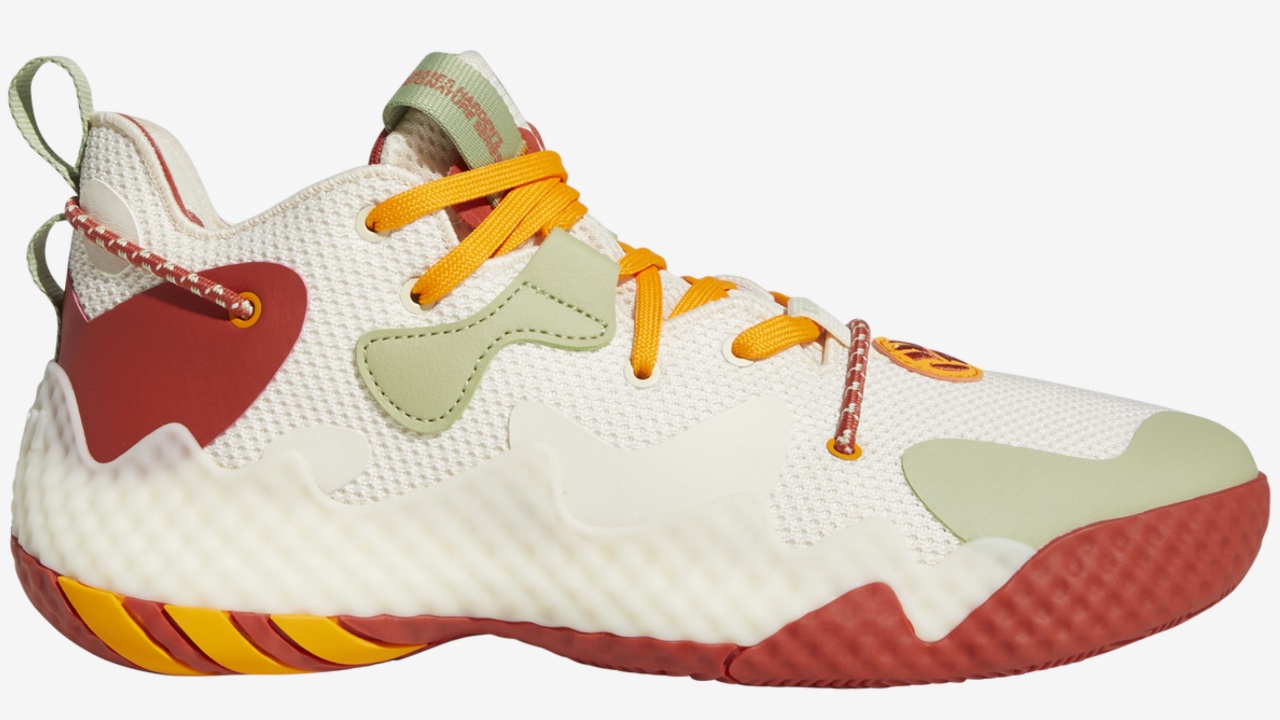
adidas Harden Vol. 6
All-Around Players: In today’s versatile game, players need shoes that provide balanced support, multidirectional traction, and energy return. The Adidas Harden Vol. 6 offers a blend of speed and stability, featuring a full-length Boost midsole for impact absorption and energy return. The Exhibit Select CP Mid provides a springy Bounce midsole and gore straps for a snug, locked-in feel, catering to players who perform across multiple positions.
Key Features of Adidas Low-Top Basketball Shoes
Upper: The upper part of a low-top basketball shoe provides some ankle support while allowing for greater agility and speed. The Exhibit Select CP Mid, for example, includes 3-Stripes gore straps that wrap around the foot, offering a secure fit from the first lace-up to the final whistle. The internal sock construction of the Dame 8 EXTPLY also ensures a comfortable and locked-down feel.
Midsole: The midsole provides cushioning and comfort, reducing fatigue and stress. Look for midsoles with flexible yet sturdy materials that absorb impact effectively. The Trae 3’s composite foam midsole and TPU propulsion plate offer explosive power and stability, perfect for high-impact moves.
Outsole: The outsole is crucial for traction and grip, helping maintain balance and avoid slips. The ripple-style outsole of the Exhibit Select provides excellent traction, enabling quick bursts of speed and sharp cuts. The Trae 3’s high-abrasion outsole, developed with biometric data, ensures reliable grip and support.
Best Low-Top Under Armour Basketball Shoes
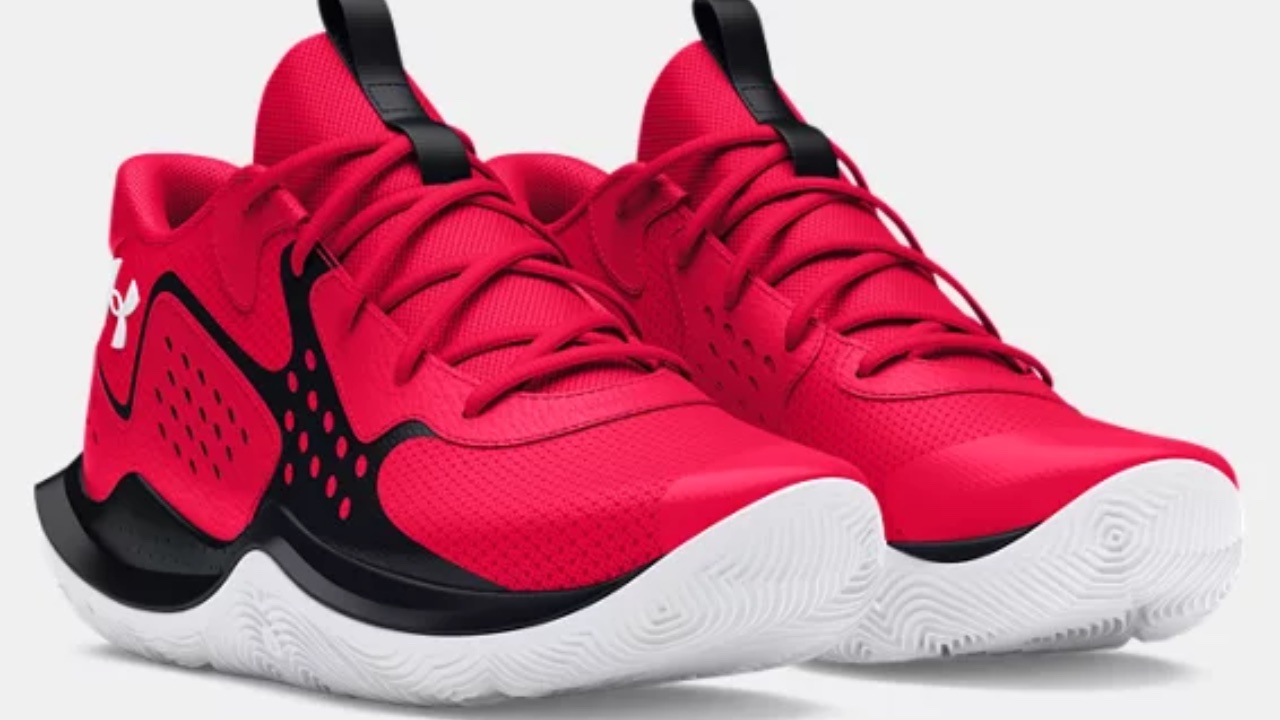
Grade School UA Jet ’23 Basketball Shoes
Finding the perfect low-top basketball shoe is crucial for maximizing your performance on the court. Under Armour offers a range of low-top basketball shoes designed to enhance support, comfort, cushioning, and traction.
Best Low-Top Basketball Shoes by Position
Forwards and Centers: Even in low-top designs, forwards and centers need stability and support. The UA Spawn 3, for example, features a unique anatomical design with layers of flexible, lightweight material to enhance movement and provide support. The Micro G foam midsole offers responsive cushioning for powerful moves and jumps.
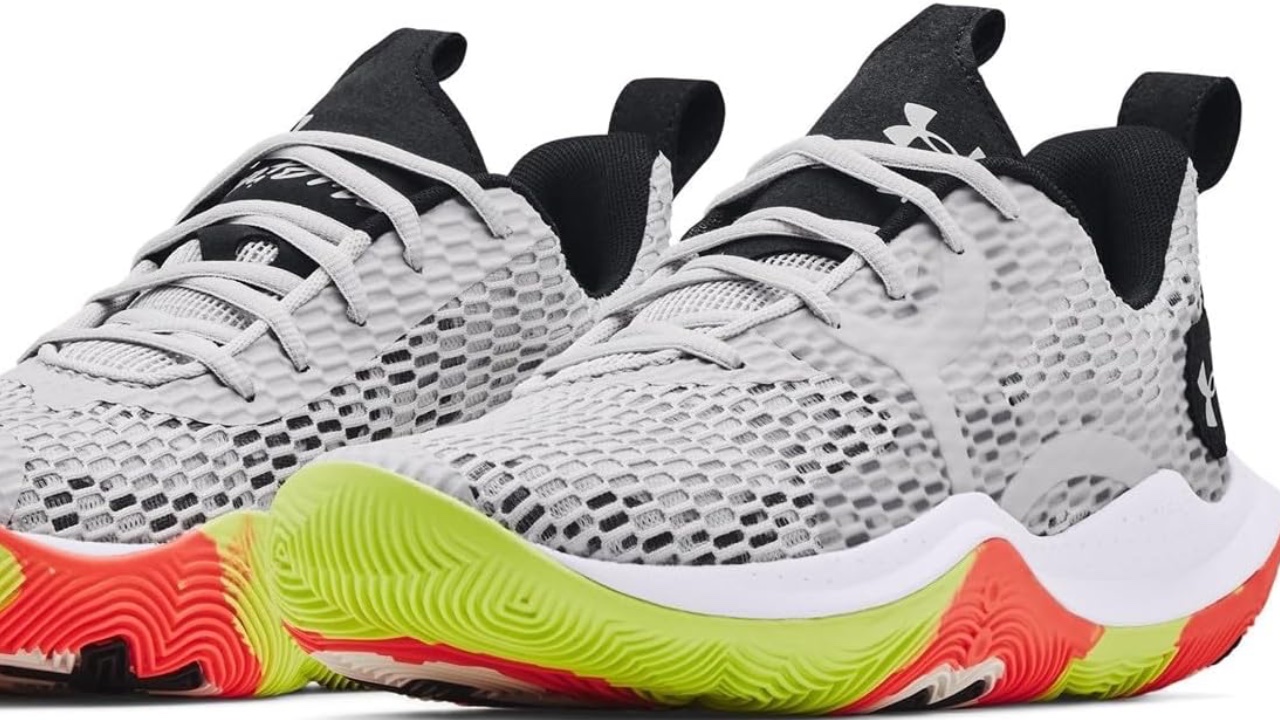
Under Armour Men’s Spawn 3 Basketball Shoe
Guards: Guards require shoes with excellent grip and traction for quick cuts and sudden stops. The Curry Flow 9, designed with Stephen Curry’s input, features a UA Flow outsole that provides grippy traction and a lightweight feel. The Warp upper material delivers a locked-in fit for agile movements.
All-Around Players: In today’s versatile game, players need shoes that provide balanced support, multidirectional traction, and energy return. The Under Armour HOVR Havoc 4 offers a full-length HOVR midsole for energy return and cushioning. The TPU shank provides lateral stability, and the durable outsole ensures excellent grip for all types of movements.
Key Features of Under Armour Low-Top Basketball Shoes
Upper: The upper part of a low-top basketball shoe provides some ankle support while allowing for greater agility and speed. The Curry Flow 9’s Warp upper material offers a secure, comfortable fit.
Midsole: This part provides cushioning and comfort, reducing fatigue and stress. The HOVR Havoc 4’s full-length HOVR midsole offers energy return and impact protection.
Outsole: The outsole is crucial for traction and grip, helping maintain balance and avoid slips. The UA Flow outsole in the Curry Flow 9 provides excellent traction and lightweight performance.
When High-Tops Are Better
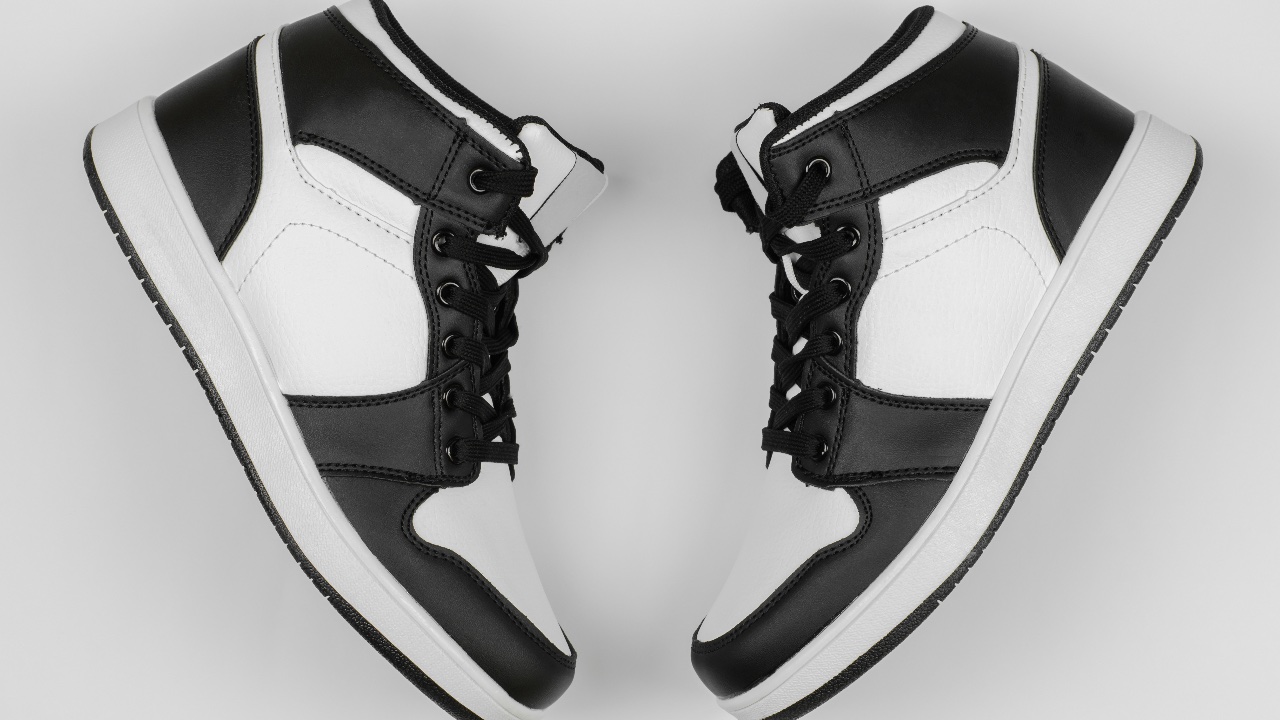
Hight-top basketball shoes
Ankle Support for Young Players: High-tops may offer better ankle support for young players who are still developing their coordination and strength. This additional support can help prevent ankle sprains and provide extra stability during quick direction changes and jumps.
Protective Cushioning: High-tops often come with more extensive cushioning, which can protect against stress fractures and other injuries. This is particularly beneficial for kids who might play on hard surfaces or engage in high-impact activities.
Peace of Mind for Parents: For parents concerned about ankle injuries, high-tops can offer reassurance due to their traditional design that encases and supports the ankle more comprehensively.
When Low-Tops Are Better
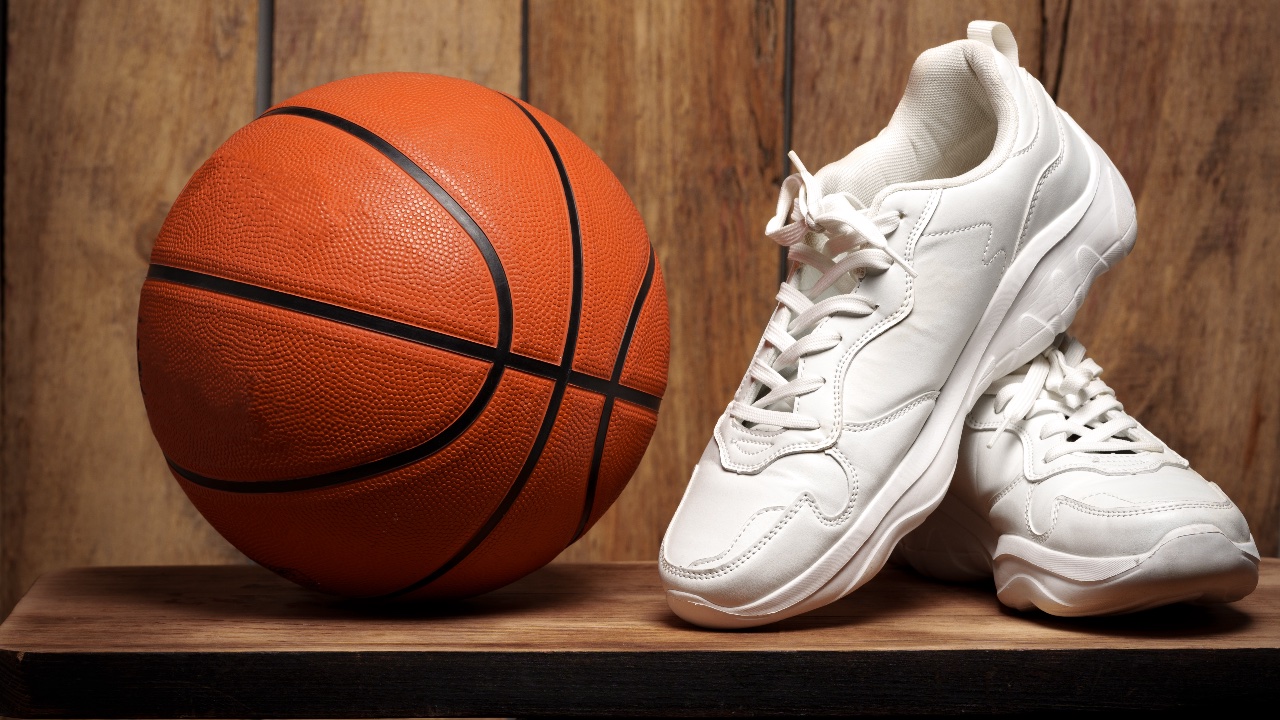
Low-top basketball shoes
Enhanced Mobility: For positions requiring speed and agility, low-tops provide enhanced mobility and quicker response times. This makes them ideal for guards and players who rely heavily on fast movements and sharp cuts.
Lightweight Comfort: Low-tops are generally lighter, reducing fatigue over long periods. This is particularly advantageous for young players who may play for extended periods during practice or games.
Personal Style and Expression: Low-tops often come in a wider variety of styles and colors, allowing young athletes to express their personal style on and off the court. This can boost confidence and encourage a greater sense of individuality.
Selecting the Right Basketball Shoes: Balancing Personal Expression and Functionality
Choosing the right basketball shoes is a nuanced decision that balances personal expression through colorways and practical functionality for optimal performance. Colorways in basketball shoes allow athletes to express personal style, team identity, and even personal branding. Recognizing this, brands offer vibrant and eye-catching options to cater to young athletes’ desire to stand out or align with their role models.

However, the decision extends beyond color and style. Ensuring a proper fit is crucial to maximizing the functionality of the shoe’s safety and performance features while ensuring comfort during play. Athletes and their parents should consult coaches, utilize fitting guides, and review current models to find shoes that meet both performance standards and aesthetic preferences. This comprehensive approach helps in selecting footwear that supports the physical demands of basketball while satisfying personal style, enabling young players to perform at their best and express individuality on the court.
Expanding Our Coverage on Low-Top Basketball Shoes
Yanko Design is committed to covering the dynamic world of low-top basketball shoes in greater detail in future articles. We aim to delve deeper into each brand’s specific technologies and individual shoe offerings. Our future content will provide focused reviews and comparative analyses of specific brands and standout models, highlighting both the functional benefits and aesthetic appeal of each shoe.

We will spotlight industry giants like Nike, Adidas, and Under Armour, covering both classic designs and the latest releases. Additionally, we’ll introduce emerging brands making significant strides with innovative technologies and designs, potentially offering unique benefits not found in more established brands.
Stay tuned for insightful content that merges detailed product information with style trends, helping young athletes and their supporters navigate the extensive options available, ensuring informed decisions that enhance both performance and personal expression on the basketball court.
The post Are Low-Top Basketball Shoes Good for Teenagers? first appeared on Yanko Design.






































